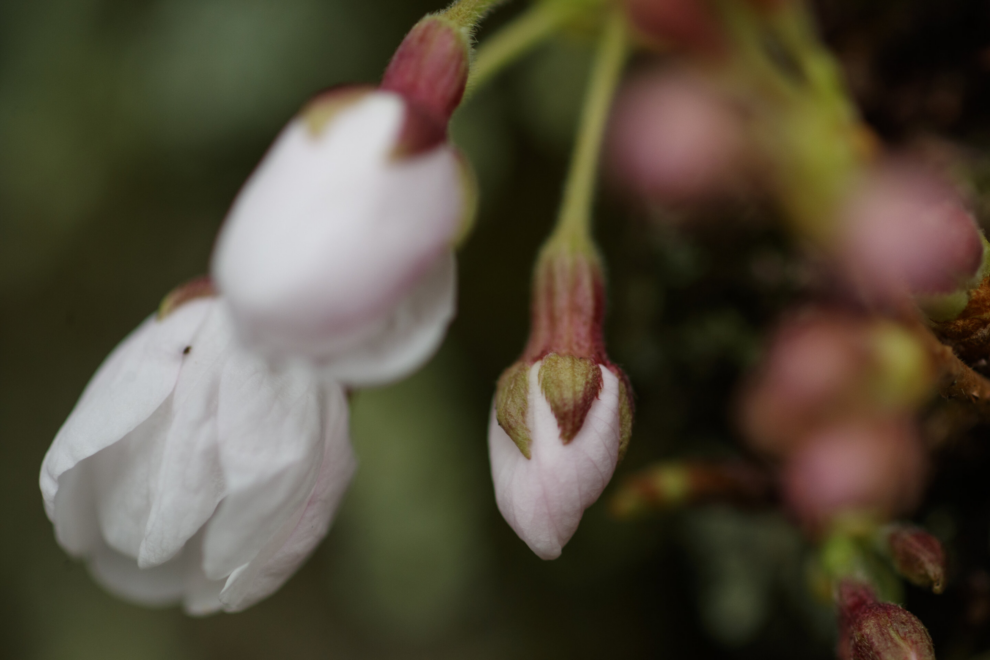Plant growers and gardeners in the U.S. have new guidance for which perennial plants could flourish, or perish in their area. The U.S. Department of Agriculture published a new version of its well-known Plant Hardiness Zone map earlier this month, an online tool that classifies growing regions based on extremely cold temperatures.
About half of the country was reclassified to a slightly warmer zone, while the other half had no change, based on a larger set of weather data and improved methods of analysis. Even before the revised map was released, some Arizona growers said they’d already seen differences in conditions.
Peach trees at Janna Anderson’s South Phoenix farm struggled for years. This year, after a summer with record temperatures, she decided to replace several for citrus. Then she learned her zoning went one half-zone higher.
“That means, basically, the things that used to grow here no longer grow here as readily,” said Anderson.
The online map displays 13 zones for the country, each divided by 10 degrees Fahrenheit of difference, moving from coldest to warmest. Each zone also has half-zones, with 5 degrees of difference. Arizona spans across zones 5 through 10.
The new map, created by USDA’s Agricultural Research Service and Oregon State University, is based on 30 years of data from 13,412 weather stations, almost twice as many as the old map. The expanded data set and the use of new mapping technology created a finer-scale map with more accurate zoning, the USDA website said.
Users can now search their zone down to the zip code level. Some of the urban heat-island effects are also captured in the map, showing lower temperatures in the countryside and large green spaces, compared to fully-paved areas.
The new online tool also includes tips for growers and links to relevant research by the agency. In Arizona some areas were reclassified to a hotter zone, while others to a colder zone. Some areas of metro Phoenix changed from a zone 9b to a 10a. That represents a difference of 5 degrees warmer.
How do growers use it?
Zones are commonly used by many agricultural producers, nurseries, plant suppliers and landscapers, who label plants and growing regions based on the classifications. Growers use zone ratings as a metric of when they might ship plants, risk management agencies use them as a tool for rating crop insurance standards, and researchers take the data to understand the dynamics of plant distribution and survival.
“It’s a risk management tool specifically focused on the (plants’) ability to survive extreme winter cold. And for the U.S., if you were to pick one parameter for woody plants, that would be it,” said Peter Bretting, the USDA’s national program leader for crop production and protection.
“It is the first cut in decision-making for perennials.”
While extreme cold zoning “is the best metric to predict the survival of perennial plants in the landscape,” it doesn’t mean other factors are less important, said Todd Rounsaville, a USDA horticulturist with the National Arboretum’s floral and nursery crops research unit. Growers have to take into consideration a long list of factors like moisture, light, summer temperatures, precipitation and wind.
While the new USDA zone map does not account for extreme heat, there are other resources, like the American Horticultural Society’s heat map, that do, said Rounsaville. Map developers also added to the classification two more zones that, on average, have “frost-free” conditions, zones 12 and 13, which only appear in Hawaii and Puerto Rico. These zones, with minimum average temperatures above 50 degrees, can also help gardeners and growers make decisions about tropical plant production and care.
How heat factors into growing decisions
Treeland Nurseries in Mesa labels plants based on their cold tolerance and tags them so consumers can make informed decisions. But when it comes to the production, zoning doesn’t have much weight. Heat tolerance does.
“As growers, we have our plant palette that we stick with and have been growing for 50 to 60 years,” said nursery manager Keith Waltemeyer.
“Whether that zone changes finely or not we try to focus on things about how we can handle the heat.”
The nursery is focused on producing what performs best. For plants they would struggle to produce but are still in demand and could survive in the Arizona heat, they work with nurseries outside of the state, he added. A zone change does not mean that what grew before in a region is destined to die, according to map developers.
“It does not mean you should start removing plants from your garden or change what you are growing. What has thrived in your yard will most likely continue to thrive,” the USDA website said.
What about summer survival?
For Anderson, it wasn’t cold zoning but extreme heat that made her decide to make changes in her fruit tree orchard. The extreme heat killed about 100 peach trees.
“It really pushed a lot of those trees over the edge,” said Anderson, the owner of Pinnacle Farms. “This year it didn’t matter how much we watered them.”
Last year, Arizona’s summer was a record-breaker. The state had the most consecutive 110-degree days, most consecutive 90-degree nights, and hottest month ever, according to the National Weather Service. Many of those trees had struggled for years, and after the die-off she took the decision to change her production. She is in one of the areas that, with the new zoning map, went from 9b to 10a.
For her, a change in the farm is needed, regardless of new zoning. The peach trees that didn’t do so bad last summer will stand, but Anderson already replaced all the others for citrus like Cara Cara oranges, mandarins, and oro blanco grapefruit. It’s also a good market decision.
“We always sell out of all of our citrus,” she said. “There is a really big need for it since all the orchards are gone.”
Another important factor is the number of “chill hours” that those trees get, or the number of hours at 32 to 45 degrees. Some fruit trees, like figs and some apple varieties require about 100 chill hours a year, while others require 800.
The shorter spring season this year also affected farmers’ production. This year there also was an extreme swing from winter almost straight into summer: “Things that would have matured in the spring didn’t really make it before it got really hot, and they just died,” she said. Replacing part of the orchard with more drought-tolerant crops, she said, is part of adapting the farm to the area’s climate.
Source: AZCentral










